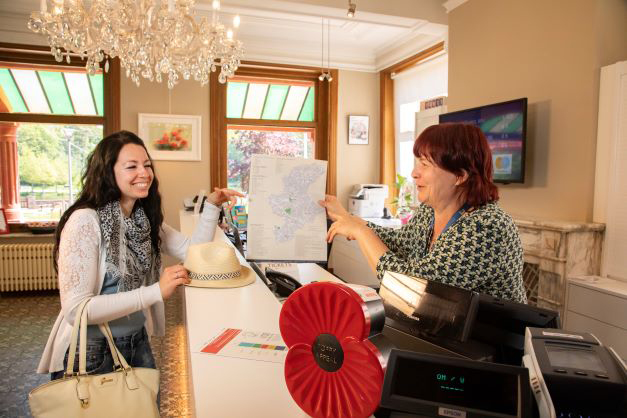The original Romanesque church dates from the 11th-12th centuries. This old church was replaced by a neo-Romanesque building in 1904, integrating the former choir as a side choir. Part of the original ironstone is thus preserved. During World War I, the building was completely destroyed, but the ancient iron sandstones continued to prove their quality. Many stones, buried under tonnes of rubble, are recovered during reconstruction. You will find them in the side wing and the fence around the cemetery.
66th E.L. Division Memorial Window
The beautiful fire-glass windows in the church are dedicated to and donated by the British 66th Division. This carried out an unsuccessful and, for them, disastrous attack on Passchendaele on 9 October. Noteworthy is the fire window (left side aisle) consecrated on 13 October 1928 to commemorate the Battle of Passchendaele. It was named the 66th E.L. Division Memorial Window. St. Cornelius is worshipped here against childhood and livestock diseases. A statue of this saint can be found in the church.
WW2
The church was not spared during World War II either. In May 1940, the spire was shot to pieces because the Germans noticed that the tower was being used as a lookout post. The damage inside the building is also considerable. Large holes yawn in the roof and the 66th Division’s fire glass window is completely destroyed. It is eventually completely repaired.
Practical info
- Can be guided
- Free








